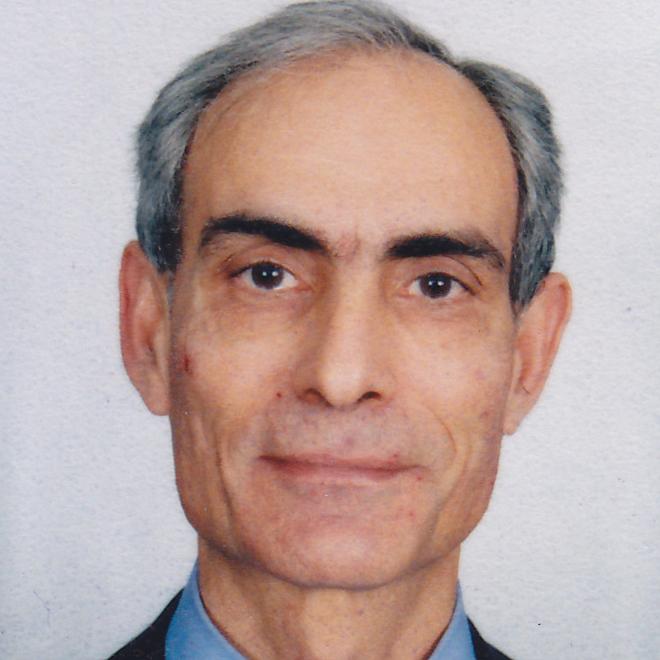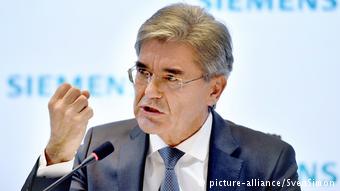Download
Introduction
An executive summary, henceforth ES, of Iraq’s Integrated National Energy Strategy, INES, was released recently (22 pages); summarising a set of, reportedly, seven volumes. Obviously, such a brief document cannot fully describe seven volumes and as a result, commenting on it is bound to be provisional and incomplete.
Topics covered in ES have many aspects in common with a report on Iraq prepared by the International Energy Agency, IEA-Iraq (IEA, 2012). Furthermore, Iraq’s National Development Plan 2013-2017, NDP13-17, was also released recently (MOP, 2013). This article, therefore, refers to these documents (‘the three documents’) in the narrative concerning INES.
In addition to commenting on oil and gas, a main thrust of this article pertains to the interrelated major objectives of economic diversification and employment. Huge increases in oil revenues consequent on the forthcoming expansion of oil/gas production will have far-reaching economic consequences. They range from short/medium-term shortages consequent on the anticipated construction boom to long-term outcomes of development strategy: e.g. perpetuation of rentierism/one-sidedness of the economy or making tangible efforts to diversify it.
Oil production
INES suggests three different alternatives/scenarios for oil (and associated gas) production for 2013-2030; low, medium, and high, table (1). In general, production levels are usually limited by production-capacity, otherwise they violate long-term sustainability. In all newly offered technical service deals, contracted/modified plateaus determine production-capacities (after 2017) in Iraq.
Table (1) Oil Production Scenarios, mbd
|
INES |
IEA-Iraq |
NDP13-17 |
|||||
|
Low |
Medium |
High |
Delayed |
Central |
High |
||
|
2012 |
2.9 |
2.9 |
2.9 |
||||
|
2017 |
5.0 |
6.5 |
13.0 |
3.6 |
4.6 |
5.9 |
9.5 |
|
2020 |
6.0 |
9.0 |
13.0 |
4.0 |
6.1 |
9.0 |
|
|
2030 |
6.0 |
9.0 |
13.0 |
4.8 |
7.5 |
10.0 |
|
Note: figure for 2012 from Ministry of Oil’s Website.
INES indicates that a production path lying between the medium and high scenarios is desirable, ES, P. 6. However, due to debilitated infrastructure, on the one hand, and desired yet uncertain developments in the short-term, on the other, it opts provisionally for the medium scenario. When desired infrastructure rehabilitation, new investments, institutional reforms, and other developments were implemented by 2015/2016, then the prospect for which scenario to adopt becomes clearer. Compared to the other documents, INES’s medium scenario corresponds to IEA-Iraq’s high scenario but falls short of NDP13-7’s figure for 2017. IEA-Iraq, however, has raised doubts about the viability of its high scenario. Furthermore, I have shown, in Merza (2011), that a production profile even slightly below INES’s medium scenario is adequate for future economic requirements of the country. INES’s high scenario, cannot, therefore, be justified economically.
From another angle, although future course of production could deviate from the medium scenario after 2015/2016, required investment in the energy sector (for 2013-2030), according to INES, amounts to $530 billion (in 2011 Dollar). This is not tied to specific scenario. IEA-Iraq sites exactly the same amount for 2013-2035 (in 2011 Dollar), but ties it to its central scenario.
World oil prices
Both INES and IEA-Iraq do not analyse or forecast the influence of future increases in Iraq’s oil production on world oil prices. They assume price levels that do not change with production scenarios; $110 and $120-125/barrel (in 2011 dollar), respectively, for 2013-2030. Alternatively, available worldwide oil forecasts, such as the base–cases in OPEC’s World Oil Outlook 2012 and EIA’s Annual Energy Outlook 2013, include ‘equilibrium’ prices, which insure balance of world supply and demand for 2013 to 2030+. Neither forecast shows Iraq’s future output or exports, and most likely, they do not anticipate the size of output/export envisaged in INES’s medium or high scenarios. It is, therefore, possible that these scenarios will have dampening effect on world oil prices.
Gas production
According to INES, gas processing and transportation infrastructure would be reasonably rehabilitated and expanded by 2015/2016. Consequently, after taking into consideration domestic requirements of dry gas and LPG, there will be a period of surplus in gas, between 2015 and 2030, which need to be exported, (ES, P. 13).
Two points are in order. First, the gas deal of southern Iraq with Shell/Mitsubishi is not mentioned in ES. That deal envisages meeting domestic requirements of dry gas/LPG and exporting LNG, LPG, and condensates, Merza (2012). Figures derived from INES’s Exhibit ES – 7, (ES, P. 13), indicate that between 2015 and 2030 average daily domestic requirements of LPG and dry gas amount to 4.4 billion cubic feet/daily (BCF/D) and production to 6.4 BCF/D, leaving average surplus of 2.0 BCF/D. This can easily accommodate the throughput of southern gas deal (2.0 BCF/D) even after 2030; especially so while noting that about 62-66% of that deal’s output can be included in domestic requirements rather than deducted from the surplus. The second point pertains to the definition of domestic requirements. They divide into three categories; first, LPG for final consumers and dry gas for electricity. The second relates to industries that use gas and derivatives as feedstock and fuel, like petrochemicals, fertilizers, and sponge iron. The third represents those using gas primarily as fuel, like steel, aluminum, etc. Apart from sponge iron, the first two types justify prioritizing domestic requirements over exports, given that efficient use is insured. Those in category three, however, need to justify priority over exports by meeting at least one of two conditions; first, economic efficiency and second, substantial forward/backward linkages beneficial to efficient sectoral/industrial growth.
Economic diversification
Like NDP13-17 and IEA-Iraq, INES considers economic diversification a primary objective: ‘develop Industries and services to diversify the economy and increase share of non-oil GDP which includes non-oil energy, government, and other sectors,’ (ES, P. 4).
In this article diversification is taken to include efforts to reduce dependence on oil, through promotion of non-oil activities that, in their totality, generate, directly and indirectly, tangible and efficient sources of foreign exchange and employment away from government services. In light of this, INES seems to adopt two somewhat disparate criteria for diversification. First, together with IEA-Iraq, it seems to consider development of oil-related and heavy energy consuming industries a fundamental part of diversification. Petrochemicals, fertilizers, steel, aluminum, cement, and bricks are the corner-stones of INES’s diversification. IEA-Iraq singles out petrochemicals, fertilizers, and cement. In both documents and also in NDP13-17, however, no attempts seem to have been made to survey, comprehensively, existing industrial structure and establishments in order to figure out what can be rehabilitated and made part of a drive towards industrialization. Furthermore, and notwithstanding INES’s recommendations to set up Strategic Industries Company and Industrial Park Authority, no serious attempts are made in the three documents to elaborate the sound industrial policy necessary to conceive, plan, and manage the process of diversification. INES’s second criterion for diversification, and this is key, implicitly includes the expansion of government services/value-added, and hence government employment, which, as we show below, contradicts diversification.
Since INES is a sectoral rather than economy-wide strategy (and it is also not a plan, as referred to in ES, P. 2), the national development plan of the country, NDP13-17, was expected to detail the energy strategies, policies, sectors, industries, investments, etc, within its economy-wide plan. In conjunction with INES it should have included a credible path of economic diversification, given that it was prepared at the same time. Instead, the very general sectoral value-added path included in NDP13-17 together with absence of detailed investment projects, action plans, benchmarks, etc, for 2013-2017, would reinforce the lopsided and rentier nature of the economy, see below.
To sum up, all three documents proclaim intentions of economic diversification without concrete visions or plans of action to achieve this goal.
Perpetuating pattern of employment: 2012-2017
Since the 1970s, and recently after 2003, expansion of government employment and public-spending-related activities were the main sources of job creation in Iraq. For instance, during 2007-2012, 59% of additional employment originated in government services, 3% only from both agriculture & manufacturing, and 38% from other sectors, table (2).
Contrary to the stated intentions for economic diversification, employment expansion pattern over the next 5 years, which can be derived from NDP13-17, in table (2) below, does not deviate from this pattern. Between 2012 and 2017, 57% of additional employment will come from government services, 7% only from both agriculture & manufacturing, and 36% from the rest.[1] This is not consistent with economic diversification.
Table (2) Employment and Labour Force 2012-2017
|
Thousands |
Change Between |
|||||||
|
2007 |
2012 |
2017 |
2007 & 2012 |
2012 & 2017 |
||||
|
‘000 |
% |
‘000 |
% |
|||||
|
Employment |
Agriculture & Manufacturing |
1,387 |
1,422 |
1,568 |
35 |
3 |
146 |
7 |
| Government Services |
2,061 |
2,815 |
3,982 |
754 |
59 |
1,167 |
57 |
|
| Other sectors |
3,332 |
3,825 |
4,574 |
492 |
38 |
749 |
36 |
|
| Total |
6,780 |
8,061 |
10,123 |
1,281 |
100 |
2,062 |
100 |
|
|
Labour Force |
CSO-Based |
7,679 |
8,866 |
10,422 |
1,187 |
1,555 |
||
| UNDESA-Based |
7,077 |
8,413 |
10,375 |
1,335 |
1,962 |
|||
| Average |
7,378 |
8,639 |
10,398 |
1,261 |
1,759 |
|||
|
Unemployment Rate, % |
CSO-Based |
11.7 |
9.1 |
2.9 |
||||
| UNDESA-Based |
8.1 |
6.7 |
2.6 |
|||||
| Average |
9.9 |
7.9 |
2.8 |
|||||
Sources:
(1) Employment: (i) 2007-2012: 2007: Central Statistical Organization (CSO; formerly COSIT)’s Iraq Household Socio-Economic Survey 2007. 2012: projection to 2012 from 2011’s employment in CSO’s Iraq Knowledge Network Survey 2011 and CSO’s population figure for 2012 in 2010/2011 Abstract of Statistic (ii) 2017: sectoral employment growth rates are based on sectoral value-added growth rates in NDP13-17, as follows: government, value-added growth rate (due to UN SNA68 method of estimation)); other non-oil sectors, 40% of value-added growth rates. For crude oil within ‘other sectors’: oil production growth rate, in INES’s medium scenario, is applied.
(2) Labour force: CSO-Based comprises population censuses’ figures and interpolations between them, including the total headcount of 2009, HCPGC (2011). UNDESA-Based refers to figures on Iraq published by Population Division in the UN Department of Economic and Social Affairs, UNDESA, for 1950-2100, UN (2011). For the projection period, CSO-Based uses the same trends of 2011-2030’s UNDESA-Based figures.
Note: government services include public administration, armed forces, health, education, and social insurance.
Labour shortages in the long-run
According to NDP13-17-based calculations, employment will increase by two millions, at the time when labour force increases by 1.75 million, between 2012 and 2017, bringing the economy close to full employment (unemployment rate of 2.8% only in 2017), table (2). With continuation and expansion of public and private spending, commensurate with rising oil revenues, after 2017, INES states that “[total] employment, …, is expected to rise by 10 million jobs by 2030,…, bringing Iraq to a condition of full employment…,” (ES, P. 18). Barring unrealistic assumptions of sharp rise in participation rate (primarily by females), addition of 10 million jobs, will not only insure full employment but also lead to acute shortage of labour, after 2017, reminiscent of that in 1975-1982.
Between 2017 and 2030, labour force will increase by 6.4 million. Given a full-employment economy by 2017, additional jobs between 2017 and 2030 will amount to more than 8 million (10 million minus the increase in employment between 2012 and 2017). Compare this to a rise in labour force of 6.4 million and we will have a labour shortage that increases, steadily, from near-zero in 2017 to 1.6 million by 2030, table (3).
Table (3): Population and Labour Force 2011-2030
|
|
CSO-based |
Labour Force: Average CSO/UNDESA ‘000 |
|||||
|
Population ‘000 |
Participation Rate of 15+ % |
Labour Force ‘000 |
|||||
|
Total |
Age Group 15 years + |
Males |
Females |
Average |
|||
|
2011 |
33,330 |
19,874 |
72.5 |
14.0 |
43.2 |
8,586 |
8,322 |
|
2012 |
34,201 |
20,394 |
72.5 |
14.5 |
43.5 |
8,866 |
8,639 |
|
2017 |
38,885 |
23,305 |
72.5 |
16.9 |
44.7 |
10,422 |
10,398 |
|
2020 |
41,841 |
25,204 |
72.5 |
18.6 |
45.6 |
11,484 |
11,600 |
|
2025 |
47,109 |
29,226 |
72.5 |
21.8 |
47.2 |
13,785 |
14,045 |
|
2030 |
52,781 |
33,440 |
72.5 |
25.6 |
49.0 |
16,402 |
16,799 |








Comment here